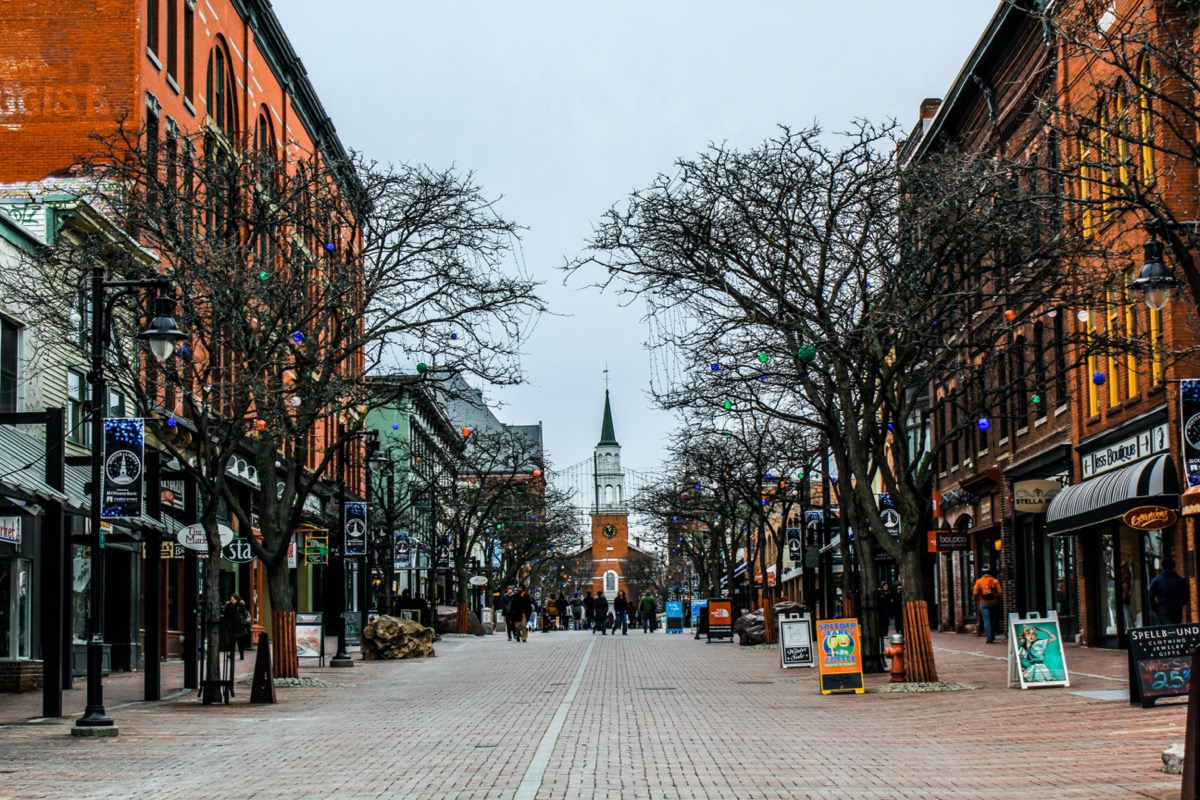If You Live in These States, Prepare for More of This Deadly Spider, Experts Say

There are tons of things to love about summer, from spending time at the beach with family and friends to barbecuing in the backyard. Unfortunately, with the warm weather tends to come an uptick in outdoor pests, from garter snakes in your garden to cicadas in your back yard.
And while the vast majority of the insects, reptiles, and other small creatures you encounter during the summer are relatively innocuous, there’s one notable exception to this rule: the brown recluse spider. The venomous arachnids, whose bites can cause tissue necrosis—and, in extremely rare cases, can be fatal, particularly among children—have been particularly active in two states this summer due to high heat conditions.
The spiders are now a common sight in both Illinois and Missouri, Jay Everitt of Rottler Pest Solutions explained to KMOV.com.
“They like these quiet spots of our homes. The closets, the basements, the attic areas,” Everitt explained. However, when temperatures exceed a certain point and attic temperatures get too hot, “[The spiders] start seeking cooler environment and a lot of time that’s the living space.”
However, Illinois and Missouri are far from the only states where you can find this venomous arachnid. According to research published in the Journal of Medical Entomology (JME), the spider is readily found throughout the U.S.* Read on to discover if this venomous spider calls your state home.
*Delaware was not represented in the study data.
RELATED: If You See This Bug, Crush It Immediately, USDA Says.
49
Vermont

Number of spiders submitted to the JME study: 1
Percent brown recluses: 0
For the latest health and safety news delivered straight to your inbox, sign up for our daily newsletter!
48
South Dakota

Number of spiders submitted to the JME study: 1
Percent brown recluses: 0
47
New Hampshire

Number of spiders submitted to the JME study: 1
Percent brown recluses: 0
46
North Dakota

Number of spiders submitted to the JME study: 1
Percent brown recluses: 0
45
Maine

Number of spiders submitted to the JME study: 1
Percent brown recluses: 0
44
Hawaii

Number of spiders submitted to the JME study: 1
Percent brown recluses: 0
43
Wyoming

Number of spiders submitted to the JME study: 2
Percent brown recluses: 0
42
Montana

Number of spiders submitted to the JME study: 2
Percent brown recluses: 0
41
Idaho

Number of spiders submitted to the JME study: 2
Percent brown recluses: 0
40
West Virginia

Number of spiders submitted to the JME study: 3
Percent brown recluses: 0
39
Rhode Island

Number of spiders submitted to the JME study: 3
Percent brown recluses: 0
38
Mississippi

Number of spiders submitted to the JME study: 4
Percent brown recluses: 0
37
Connecticut

Number of spiders submitted to the JME study: 5
Percent brown recluses: 0
36
Minnesota

Number of spiders submitted to the JME study: 6
Percent brown recluses: 0
35
Massachusetts

Number of spiders submitted to the JME study: 8
Percent brown recluses: 0
34
Maryland

Number of spiders submitted to the JME study: 10
Percent brown recluses: 0
33
Alaska

Number of spiders submitted to the JME study: 12
Percent brown recluses: 0
32
Michigan

Number of spiders submitted to the JME study: 12
Percent brown recluses: 0
31
New Jersey

Number of spiders submitted to the JME study: 14
Percent brown recluses: 0
30
Wisconsin

Number of spiders submitted to the JME study: 16
Percent brown recluses: 0
29
South Carolina

Number of spiders submitted to the JME study: 17
Percent brown recluses: 0
28
Louisiana

Number of spiders submitted to the JME study: 18
Percent brown recluses: 0
27
Utah

Number of spiders submitted to the JME study: 26
Percent brown recluses: 0
26
North Carolina

Number of spiders submitted to the JME study: 30
Percent brown recluses: 0
25
Oregon

Number of spiders submitted to the JME study: 32
Percent brown recluses: 0
24
Washington

Number of spiders submitted to the JME study: 40
Percent brown recluses: 0
23
New York

Number of spiders submitted to the JME study: 41
Percent brown recluses: 0
22
Florida

Number of spiders submitted to the JME study: 120
Percent brown recluses: 0
21
Georgia

Number of spiders submitted to the JME study: 32
Percent brown recluses: 3.1
20
California

Number of spiders submitted to the JME study: 581
Percent brown recluses: 3.3
19
Colorado

Number of spiders submitted to the JME study: 19
Percent brown recluses: 5.3
18
Pennsylvania

Number of spiders submitted to the JME study: 19
Percent brown recluses: 10.5
17
Virginia

Number of spiders submitted to the JME study: 24
Percent brown recluses: 12.5
16
New Mexico

Number of spiders submitted to the JME study: 15
Percent brown recluses: 13.3
15
Ohio

Number of spiders submitted to the JME study: 32
Percent brown recluses: 18.2
14
Nebraska

Number of spiders submitted to the JME study: 13
Percent brown recluses: 23.1
13
Arizona

Number of spiders submitted to the JME study: 33
Percent brown recluses: 24.2
12
Iowa

Number of spiders submitted to the JME study: 7
Percent brown recluses: 28.6
11
Nevada

Number of spiders submitted to the JME study: 31
Percent brown recluses: 29
10
Illinois

Number of spiders submitted to the JME study: 91
Percent brown recluses: 29.7
9
Alabama

Number of spiders submitted to the JME study: 25
Percent brown recluses: 32
8
Indiana

Number of spiders submitted to the JME study: 27
Percent brown recluses: 37
7
Tennessee

Number of spiders submitted to the JME study: 29
Percent brown recluses: 55.2
6
Texas

Number of spiders submitted to the JME study: 142
Percent brown recluses: 59.9
5
Kentucky

Number of spiders submitted to the JME study: 35
Percent brown recluses: 62.9
4
Arkansas

Number of spiders submitted to the JME study: 15
Percent brown recluses: 66.7
3
Oklahoma

Number of spiders submitted to the JME study: 43
Percent brown recluses: 74.4
2
Kansas

Number of spiders submitted to the JME study: 56
Percent brown recluses: 76.8
1
Missouri

Number of spiders submitted to the JME study: 142
Percent brown recluses: 89.2
RELATED: If You See This Bug, Never Touch It Without Gloves & a Mask, Experts Warn.